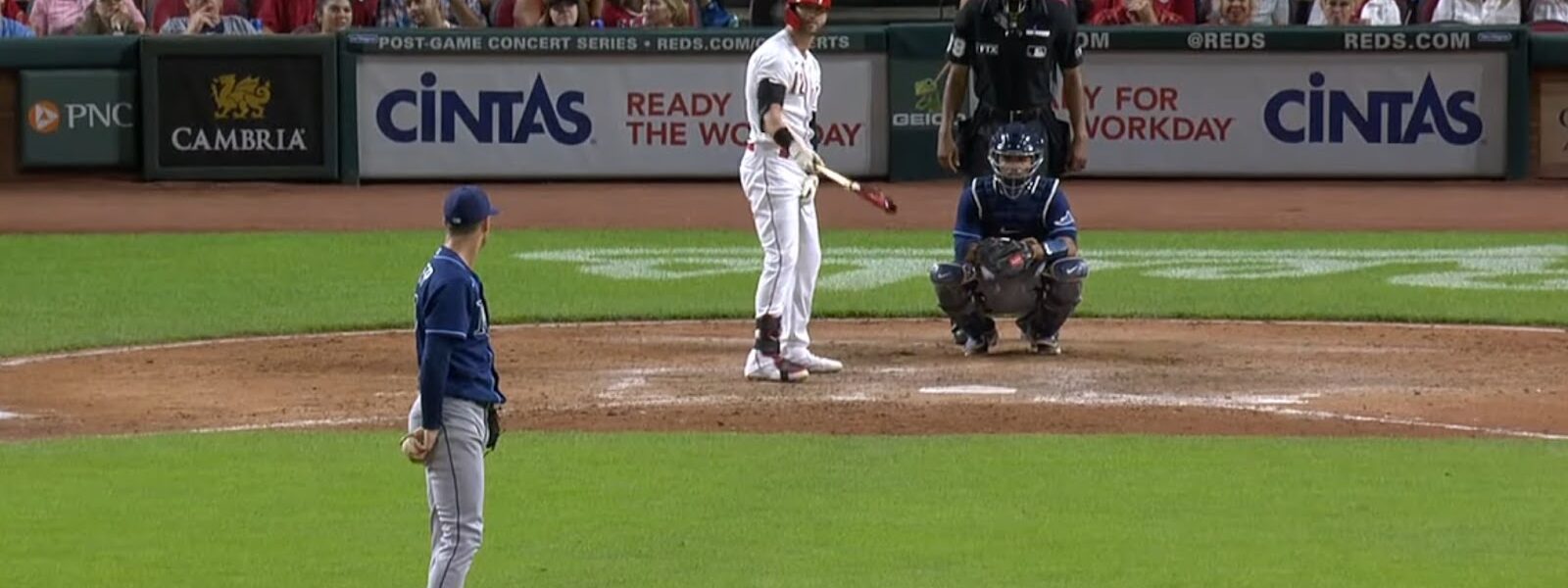In the game of baseball, a Balk is an illegal action committed by a pitcher when there are runners on base. This results in each runner advancing one base. The rule is designed to prevent pitchers from misleading baserunners, maintaining fairness and the integrity of the game.
The Essence of a Balk in Baseball
At its core, a Balk occurs when a pitcher performs an illegal motion or throw, aiming to deceive either the baserunner or the batter. This can include a variety of actions, from improper set position to dropping the ball.
Diverse Scenarios Leading to a Balk
Balks in Baseball: A Multifaceted Rule
Balks in baseball can arise from multiple situations. The most common instances involve the pitcher’s set position, making throws to a base, or accidentally dropping the ball. When a pitcher is called for a Balk, any runners on base are allowed to advance one base, which could even lead to scoring a run. This rule not only ensures fairness but also adds a strategic layer to the game. A pitcher must constantly balance the need for deception with the risk of committing a Balk. Each moment on the mound becomes a high-stakes decision, affecting the game’s outcome. A Balk can turn the tide of a game, giving the offensive team a crucial advantage. It underscores the importance of discipline and precision in pitching. For coaches and players, understanding the various scenarios that can lead to a Balk is part of strategic planning, turning each game into a complex ballet of moves and countermoves.
The Set Position and Balks
Many Balks occur while the pitcher is in the set position. This position involves the pitcher standing perpendicular to the rubber. They must bring their hands together and come to a complete stop before pitching. Failure to stop completely is deemed a Balk. Interestingly, a complete stop is not required when attempting to pick off a runner. This specific requirement in the set position adds a layer of complexity to the pitcher’s role. It demands not only physical skill but also mental acuity, as the pitcher must be aware of their movements at all times. The rule also serves as a test of patience and control, preventing pitchers from rushing their actions. In a high-pressure situation, maintaining the correct set position is as crucial as the pitch itself. This aspect of the rule helps maintain a balance between the offensive and defensive aspects of the game, ensuring that neither side gains an undue advantage.
Pickoff Moves and Balks
Pitchers face numerous challenges during pickoff attempts, often leading to Balks. A fundamental rule is that a pitcher must not stand on the rubber without the ball. This is crucial in situations like the hidden ball trick. Additionally, pitchers cannot flinch or make deceptive movements in the set position, as these are considered Balks. These restrictions place significant pressure on pitchers, demanding a high level of skill and concentration. The challenge lies in executing a successful pickoff move while adhering to the strict guidelines, balancing the art of deception with the rule of law. This aspect of the Balk rule enhances the game’s psychological component, as pitchers and baserunners engage in a mental duel. A successful pickoff move can be a game-changer, but the risk of committing a Balk adds a thrilling element of risk. This delicate balance keeps the game exciting and unpredictable, where a single move can have significant repercussions.
Throwing to a Base
A pitcher must make a definitive move towards a base to attempt a pickoff. This rule is particularly relevant for left-handed pitchers moving towards first base. Throwing to an unoccupied base while on the rubber is also prohibited.
Regulation of Fake Throws in Baseball
Fake throws are heavily regulated in baseball, adding a tactical dimension to pitching. For instance, pitchers cannot fake a throw to first base without stepping off the rubber. Moreover, they cannot feign a throw to an unoccupied base, which would be a Balk. This regulation aims to maintain a level of honesty in the pitcher’s intentions, preventing them from too easily deceiving baserunners. The restrictions on fake throws include:
- No Faking to First Base: Pitchers must genuinely throw to first if they make a move in that direction, unless they step off the rubber;
- No Throws to Unoccupied Bases: Throwing to a base without a runner, while on the rubber, is prohibited;
- Stepping Off the Rubber: Pitchers can only fake a throw after disengaging from the rubber.
These rules intensify the psychological warfare between pitcher and baserunner, with pitchers needing to cleverly navigate these restrictions. It demands a blend of physical skill and strategic thinking, making the pitcher’s role more complex and intriguing. Ensuring adherence to these rules not only enhances the integrity of the game but also adds an element of suspense and anticipation for the audience.
Changes in Rules: The Fake to Third
Before 2013, faking a throw to third and then attempting a pickoff at first was legal. This rule was amended in 2013 to classify such a move as a Balk, aiming to speed up gameplay and reduce pickoff attempts. This change highlights baseball’s evolving nature and its continual adjustment for improved play and viewer engagement. Key aspects of this rule change include:
- Elimination of the Third-to-First Move: The rule change specifically targeted the strategy of faking a throw to third base and then quickly turning to pick off a runner at first;
- Increased Game Pace: By eliminating this move, the intention was to reduce the game’s downtime and maintain a steady pace of play;
- Strategic Impact: This amendment forced pitchers and coaches to rethink strategies for pickoff attempts, emphasizing more straightforward and less deceptive tactics.
This rule change reflects baseball’s responsiveness to the needs of both players and fans. By adjusting the rules, the governing bodies aim to maintain a balance between strategic depth and entertainment value, ensuring the game remains both challenging for the players and enjoyable for the spectators.
The Simplicity of Dropping the Ball
Dropping the ball while in the set position, with runners on base, is a straightforward yet rare instance of a Balk.
Not Touching the Rubber
Pitchers must make contact with the rubber during their pitching motion, both in the set position and the windup. Failure to do so results in a Balk.
Illegal Pitches as Balks
Illegal pitches, like quick pitches or altered delivery styles, are deemed Balks, advancing any runners on base.
Deceptive Practices by Pitchers
The underlying principle of a Balk in baseball is centered on the act of deception by the pitcher, primarily executed through pickoff moves or other tactical maneuvers. These instances are subject to the umpire’s judgment and frequently become sources of contention on the field. The complexity of Balk rules lies in their subjective nature, requiring umpires to discern the pitcher’s intent and execution. This subjectivity often results in varying interpretations, leading to debates and discussions among players, coaches, and fans alike. The key elements of a Balk include:
- Deceptive Movements: Any action by the pitcher that is intended to mislead the baserunner;
- Umpire’s Judgment: The final decision on whether a movement constitutes a Balk lies with the umpire;
- Potential for Disputes: Given the subjective nature of the call, Balks can lead to disagreements and on-field discussions.
| Aspect | Description |
|---|---|
| Deceptive Action | Any movement by the pitcher meant to trick the baserunner. |
| Umpire’s Role | Responsible for interpreting and calling a Balk. |
| Dispute Potential | High, due to the subjective nature of the rule. |
The intricacy of these rules adds a layer of unpredictability to the game, making it as much a mental challenge as a physical one. The Balk rule, with its inherent ambiguity, not only tests the pitcher’s skill but also the umpire’s ability to accurately interpret the rules under dynamic and often high-pressure situations.
Walk-Off Balk: A Rare Occurrence
A walk-off Balk happens when the winning run is scored due to a pitcher’s Balk, especially in situations with loaded bases. While rare, it’s a valid and dramatic end to a game.
The Complexity of the Balk Rule
The Balk rule, with its nuances and intricate details, can be perplexing for both players and fans. Understanding this rule, from its basic definition to its more obscure aspects, enhances the baseball viewing experience and sheds light on why pitchers are sometimes penalized for a Balk.
Conclusion: The Balk Rule in Perspective
The Significance of Understanding Balks
Grasping the concept of a Balk in baseball is vital for players, coaches, umpires, and fans alike. It’s a rule steeped in subtleties and nuances, pivotal for ensuring fair play and upholding the game’s integrity. The Balk rule prevents pitchers from gaining an unfair advantage through deception, making baseball a game where skill and strategy are paramount.
Balks: More Than Just a Rule
Balks represent more than a simple infringement; they embody the intricate dance between pitchers and baserunners, a game within a game. Every pitch carries potential implications, and understanding the Balk rule adds depth to the appreciation of this dynamic. It turns the baseball diamond into a chessboard, where each move is critical and calculated.
Education and Adaptation
For budding players and seasoned professionals, a thorough understanding of the Balk rule is a testament to their dedication and adaptability. This knowledge is crucial for developing strategies and avoiding costly errors. It’s a rule that demands continuous learning and adaptation, reflecting the ever-evolving nature of baseball.
A Rule That Shapes the Game
Ultimately, the Balk rule is a cornerstone of modern baseball. It challenges players to maintain precision and composure, umpires to exercise keen judgment, and fans to engage deeply with the game’s tactical aspects. This rule isn’t just a part of the rulebook; it’s a fundamental aspect that shapes the way baseball is played and enjoyed. Understanding the Balk is essential to fully appreciate the complexities and beauty of America’s beloved pastime.




